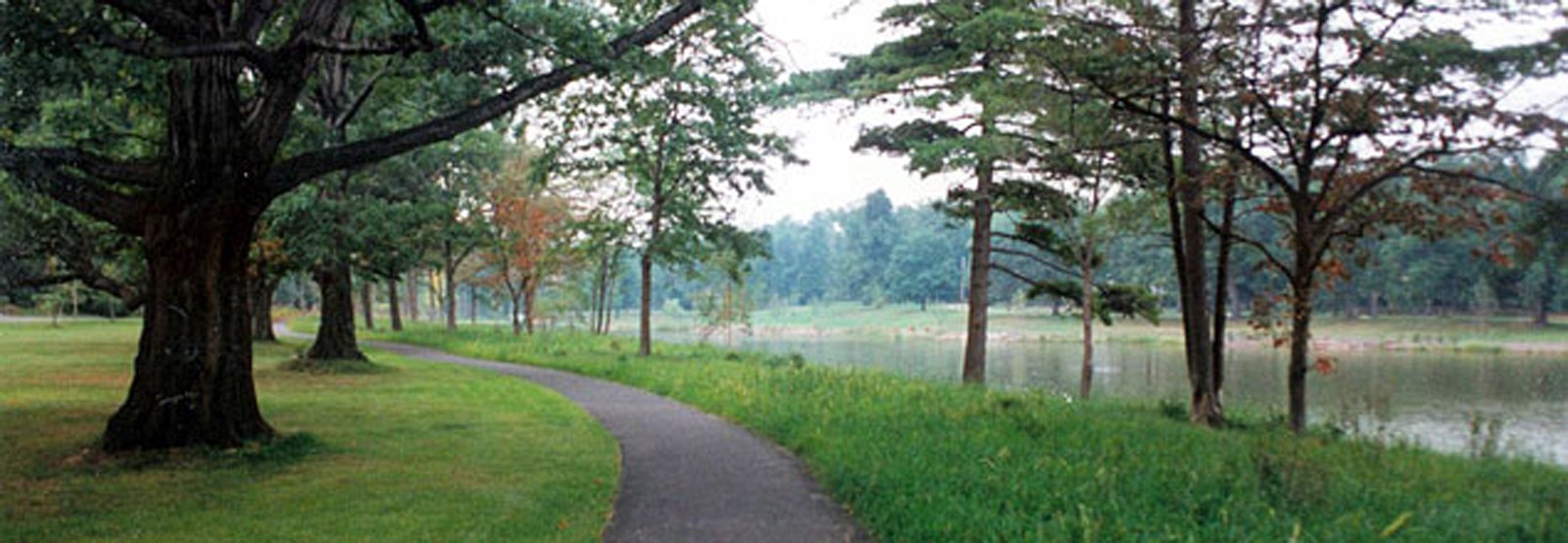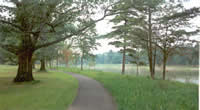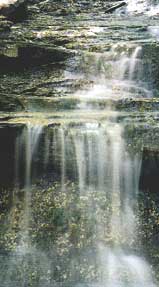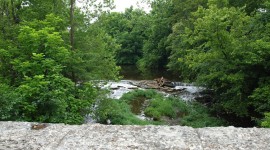Nature in the City: Seneca Park

Conceived as a wild and scenic refuge in a developing urban environment, sections of the original park have been lost, but others survive along the park's beloved Trout Pond.
Here, as with the Sheep Meadow in New York City's Central Park, Olmsted designed a lawn to bring the country to the city. A recent proposal to triple the size of the park zoo and create a 650-car parking lot would destroy a major remnant of Olmsted's great vision, replacing it with asphalt and concrete.
History
Along the Genesee River in Rochester, New York, stands another Olmsted masterwork of landscape architecture, conceived as a linear scenic refuge in a developing urban setting. Seneca Park is one of the three original parks of Rochester's park system, which was sited and designed by Frederick Law Olmsted, Sr. late in his career. ![]()
When reviewed in the context of the 1888 Report of the Board of Park Commissioners of the City of Rochester, NY 1888-1998, Olmsted's design intent of over a century ago is still ever present today. The Commissioners stated, "In this park we have the incomparable efforts of nature in one of her finest opportunities. The park, lying on both sides of the river, contains the canyon of the Genesee with banks rising two hundred feet from the river and densely clothed with a native forest. This park contains 212 acres, 71 west and 141 east. The road and walk run near the bank, the former diverging through a native forest, which remains in its primitive beauty. A small lake of five acres fed by springs becomes the next strongest point of interest..."


Today, the historic park, surrounded by earlier roadway and building development, remains most intact in the large northeast section. In this area, the park drive and trail still curve along the rim of the river gorge, enframed by informal groves of native trees (predominantly oaks), and punctuated with scenic outlooks. The drive descends through dense rolling woodland, emerging at a plateau containing meadows, picnic groves and Trout Lake, its waters placidly reflecting the surrounding forest. The one-way drive loops around the lake, and winds back to the upper park. The most significant later addition into this picturesque landscape, the Seneca Park Zoo, is largely hidden by woodlands and grade-separation, within the park buffer. The park retains the essence of both the native wooded river gorge and the nineteenth-century landscape, as it was designed.
In the recent Seneca Park Master Plan, the renowned Olmsted scholar, Dr. Charles Beveridge, noted, "In his plan for Seneca Park, Olmsted created a variety of landscape experiences. At the same time his design was unified by its system of walks and drives, as well as by its focus on the river and the gorge. In creating the plan, Olmsted drew from his earlier design work for scenic reservations and from the planning of such formal "Alamedas" as New York City's Riverside Park. In the process he created a unique design that made full use of the opportunities offered by the impressive scenery of the Genesee River below the falls." (Beveridge, Seneca Park Master Plan, p. 10). Today, a zoo expansion project puts this nationally significant masterwork at risk.

Threat
The immediate threat to the historic park landscape is the current plan to triple the size of the zoo to accommodate additional animal displays, concessions and visitor parking. The zoo expansion, as proposed, bursts out of the soft, landscaped buffer, spanning the park to the edge of the river gorge. It replaces the winding park drive and forested hillside with a 650-car parking lot, requiring massive clearing. In the process it also regrades the soft rolling terrain into an expansive sea of concrete and asphalt. The new design dominates the Olmsted designed landscape, including the views to and around the sylvan Trout Lake.
The zoo expansion is estimated to cost $65 million dollars, with fundraising and construction phased over twenty years. The parking lot is scheduled for the first phase of construction. The plan has been accepted and is being promoted by the project sponsors, the Zoo Society and the Monroe County Department of Parks.
Although the community supports the idea of improving the zoo, (if not the expansion, as proposed) there has been consistent and vigorous public opposition to the destruction of parkland. Citizens have sent a steady stream of letters to the editor.
How to Help
A coalition of eight groups, including preservationists, neighborhood groups, environmentalists and community park advocates, named the Seneca Park Alliance, has rallied to the defense of the park. Members speak in public forums, write editorials and letters to the editor, contact public officials, display and distribute lawn signs, lead tours of the park, and mount exhibitions of historic plans and photographs, advocating preservation. The Seneca Park Alliance proposes, as an alternative to the new parking lot, a tram system to transport people to and from existing parking lots. ![]()





